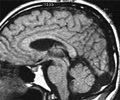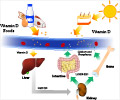American researchers have developed an experimental approach for delivering of vitamin D for treating inflammatory breast cancer (IBC).

University of Delaware cancer researcher Anja Nohe was living in Maine when she first received funding from the Maine Cancer Foundation to determine the effect of calcitriol on breast cancer cells. Reading cancer literature helped her make connections between cancer, vitamin D, and the daylight regime of higher latitudes. "By talking with talented colleagues about these ideas, the foundation was set for the current project," she says. After moving to the University of Delaware, she began working with Kenneth Van Golen, "an expert in the biology of IBC," to evaluate calcitriol.
Compared to other forms of breast cancer, IBC is especially difficult to treat. It has a five-year survival rate of 40% versus 87% for all other breast cancers. A big part of what makes IBC treatment difficult is its multi-site growth pattern. Current aggressive treatments such as combinations of chemotherapy, surgery and radiation, have failed to significantly improve IBC survival rates.
This early experimental work on mice is encouraging because data show calcitriol can inhibit invasion and migration of SUM149 cells, an IBC cell line. "New IBC therapies are urgently needed, which is why the goal of my work is to find a successful treatment for inflammatory breast cancer, especially one with fewer side effects," Nohe says.
Source-Eurekalert















